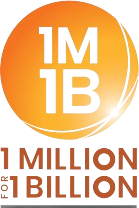EVEN as the US Federal Reserve left interest rates unchanged on Wednesday (Jul 30), the central bank sent mixed signals about its next move and caused a fair bit of confusion in global stock markets.
The Fed kept rates in their current range of between 4.25 per cent and 4.5 per cent at the end of its two-day policy meeting.
In one clear sign that the Fed is preparing to pivot after five straight decisions to hold rates steady, two members of the rate-setting committee dissented – the first time these many central bank governors had publicly opposed the board’s action since 1993.
The dissenters were Michelle Bowman and Christopher Waller. The latter, however, was hardly a surprise. As part of US President Donald Trump’s extraordinary pressure campaign on Fed chairman Jerome Powell, the administration has touted Waller as a possible successor.
Trump has also threatened to fire Powell several times. Most recently, he confronted the central banker about the costs of the Fed’s renovation project, hinting at impropriety. Above all, Trump has peppered Powell with persistent demands for rate cuts.
“Given the recent pressure to cut, it’s not too surprising that there were a couple of dissenters within the committee,” said Bret Kenwell, a US options and investment analyst at brokerage eToro, in a note to clients.
BT in your inbox
Start and end each day with the latest news stories and analyses delivered straight to your inbox.
The doves, or those in favour of a rate cut, on Wall Street also drew encouragement from the Fed’s statement. The statement placed more emphasis on the apparent slowdown in the economy and did not highlight any reduction in uncertainty, as had been the case in the June edition.
Powell pushed back on suggestions that a September rate cut was a foregone conclusion. That caused US stocks to drop. At his press conference after the policy meeting, Powell seemed to indicate that inflation was still the bigger worry, noting that the jobs market appeared to be in a healthy state of balance.
“The unemployment rate is still low,” said Powell. Jobs creation and the supply of jobseekers have moved down in tandem, he added. “We have been there for a year; job creation has moved down, but we also know, because of immigration policy, the flow into our labour force is a great deal slower.”
The slowing of jobs creation could, of course, presage an increase in unemployment, but Powell seemed to suggest that the Fed had no business trying to pre-empt a slowdown that has not happened yet.
Job turnover, wage growth, job vacancies and the unemployment rate were all “pretty stable”, he said.
Strategists were divided on Powell’s message, however, and the stock market recouped most of the initial losses in the wake of the press conference.
“Powell dropped some hints that a rate cut was more likely at the next meeting in September,” said Chris Zaccarelli, chief investment officer at money manager Northlight Asset Management.
He highlighted Powell’s comments about measures of long-term inflation coming close to the Fed’s 2 per cent goal, and his acknowledgement of a “reasonable base case” that inflation from tariffs would be a “short-lived” one-off event.
An independent Fed
Powell found himself having to assert the central bank’s independence yet again. One reporter even explicitly asked whether Trump’s focus on the renovation controversy was just another point of pressure in a campaign to get the central banker to cave in to demands for rate cuts.
Powell handled the moment with grace, pointing out that Trump’s visit ended with the two men agreeing that the priority was to finish the renovation as soon as possible.
Later, Powell seized on a reporter’s question about the risks of Trump’s approach to the Fed’s independence. In the same vein as an economic historian, rather than a turf warrior, Powell pointed out that central banks had always been removed from politics because stable monetary policy would be impossible if it was used for political ends, such as tipping the balance during elections.
There might have been the faintest trace of mockery in Powell’s observation that the advantages of an independent central bank that is focused on data, rather than political objectives such as election victories, were “pretty widely understood, at least in Congress”.
Addressing the unusual level of dissent, Powell characterised the meeting as a healthy debate between those central bankers who perceived the need for action because of a slowdown in private-sector jobs growth, and the majority who argued that the US labour market remains in balance. It’s a debate that’s likely to continue for some time to come.
Eventually, Powell said that it would likely be appropriate to cut rates.
But the key was “getting the timing right”, he noted. “If we cut rates too soon, maybe we didn’t finish the job with inflation. If we cut too late, we might do unnecessary damage to the labour market.”
As things stand, Powell’s Fed still has data – not Trump – as its guiding star, no matter how much the US president pushes for that role.




